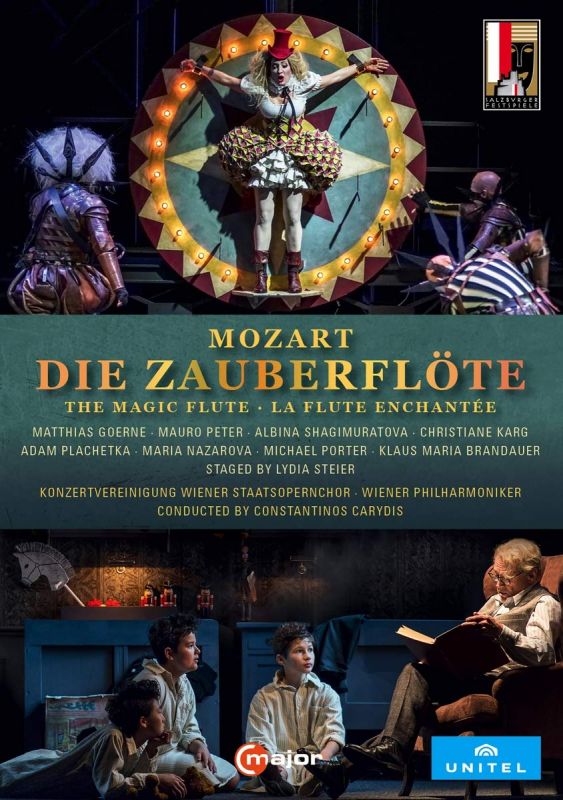MOZART Die Zauberflöte (Carydis)
View record and artist detailsRecord and Artist Details
Composer or Director: Wolfgang Amadeus Mozart
Genre:
Opera
Label: C Major
Magazine Review Date: 09/2019
Media Format: Digital Versatile Disc
Media Runtime: 144
Mastering:
DDD
Catalogue Number: 749 708

Tracks:
| Composition | Artist Credit |
|---|---|
| (Die) Zauberflöte, '(The) Magic Flute' |
Wolfgang Amadeus Mozart, Composer
Adam Plachetka, Papageno, Bass-baritone Albina Shagimuratova, Queen of the Night, Soprano Christiane Karg, Pamina, Soprano Constantinos Carydis, Conductor Klaus Maria Brandauer, Grandfather Maria Nazarova, Papagena, Soprano Matthias Goerne, Sarastro, Baritone Mauro Peter, Tamino, Tenor Michael Porter, Monostatos, Tenor Tareq Nazmi, Speaker, Bass Vienna Boys' Choir, Three Boys Vienna Philharmonic Orchestra Vienna State Opera Concert Choir Wolfgang Amadeus Mozart, Composer |
Author: Richard Lawrence
Most of Schikaneder’s dialogue is replaced by the Grandfather’s narration, engagingly read by Klaus Maria Brandauer, who sometimes – not too often – speaks over the music. The boys participate in the action, of course, when not listening to the story. Tamino is dressed as a wooden toy soldier, with apple-red cheeks. The Queen, mysteriously, is in bridal white. The temple is peopled by grotesques: acrobats, jugglers, men on stilts. Pamina is a doll in a rah-rah skirt. Sarastro, in topper and striped trousers, is described as a magician but could be the Animal Trainer from Berg’s Lulu. And when the Speaker emerges for the beginning of Tamino’s journey towards enlightenment we see a grinning jackanapes chomping on a cigar.
That is enough to make you grit your teeth, though I suppose some might find it entertaining. It’s the end that really takes the biscuit. The final trial, by fire and water, consists of Tamino and Pamina watching footage of First World War carnage, after which Monostatos and the Three Ladies are shot on the orders of Sarastro; the Queen too, perhaps, but the camera cuts away at the crucial moment. You can forget the opera’s crucial message of the triumph of light over darkness. Not surprisingly, the three boys are deeply distressed.
There hardly seems any point in commenting on the singing and playing. Constantinos Carydis pulls the tempos around: often too fast and too finicky, but the Vienna Philharmonic are with him all the way. It’s ironic that despite using the New Mozart Edition he adds piano, harpsichord and organ. One of his best moments is the pause before the aching postlude to Christiane Karg’s beautiful ‘Ach, ich fühl’s’. For a baritone, Matthias Goerne copes better than you might expect with Sarastro’s bottom notes. The three boys act and sing wonderfully well. When Papageno discovers Pamina he is clutching what looks like an enormous turkey: an all too apt symbol, unfortunately, of this misconceived farrago.
Discover the world's largest classical music catalogue with Presto Music.

Gramophone Digital Club
- Digital Edition
- Digital Archive
- Reviews Database
- Full website access
From £8.75 / month
Subscribe
Gramophone Full Club
- Print Edition
- Digital Edition
- Digital Archive
- Reviews Database
- Full website access
From £11.00 / month
Subscribe
If you are a library, university or other organisation that would be interested in an institutional subscription to Gramophone please click here for further information.




